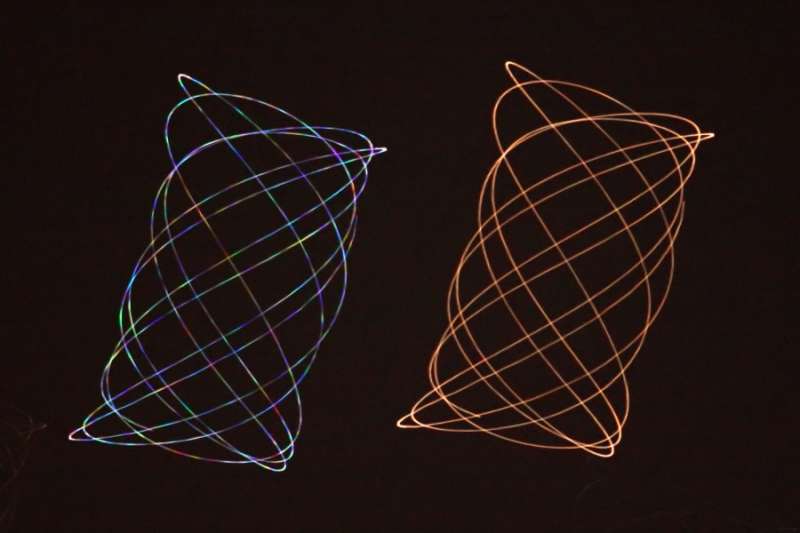Credit & Copyright: Juergen Michelberger
Explanation:
On June 4, 2010 Regulus, alpha star of the constellation Leo,
and wandering planet Mars were at about the same apparent brightness,
separated on the sky by 1.5 degrees.
An ingenious and creative 10 second exposure from
a swinging camera
recorded these gyrating trails of the celestial pairing.
Can you tell which trail belongs to the star and
which to the planet?
Hint: atmospheric turbulence causes the image of the
star to scintillate or
vary in brightness and color more readily than the planet.
The scintillation is more pronounced
because the star is effectively a point source of light seen
as a narrow bundle of light rays.
Rapidly changing
refraction due to
turbulence along the
line of sight affects
different colors of light by
different amounts and generally produces a
twinkling
effect for stars.
But Mars is much closer than the distant stars and an extended
source of light.
Though tiny, its disk is seen as a bundle of
light rays that is substantially broader compared to
a star's and so, on average,
less affected by small scale
turbulence.
The result is the varied,
rainbow like trail for Regulus (left)
and the steadier, consistently reddish trail for Mars.
1999 2000 2001 2002 2003 2004 2005 2006 2007 2008 2009 2010 2011 2012 2013 2014 2015 2016 2017 2018 2019 2020 2021 2022 2023 2024 2025 |
Январь Февраль Март Апрель Май Июнь Июль Август Сентябрь Октябрь Ноябрь Декабрь |
NASA Web Site Statements, Warnings, and Disclaimers
NASA Official: Jay Norris. Specific rights apply.
A service of: LHEA at NASA / GSFC
& Michigan Tech. U.
|
Публикации с ключевыми словами:
star - regulus - planet - Mars - refraction - звезды - Регул - планеты - Марс - турбулентность атмосферы - рефракция
Публикации со словами: star - regulus - planet - Mars - refraction - звезды - Регул - планеты - Марс - турбулентность атмосферы - рефракция | |
См. также:
Все публикации на ту же тему >> | |
